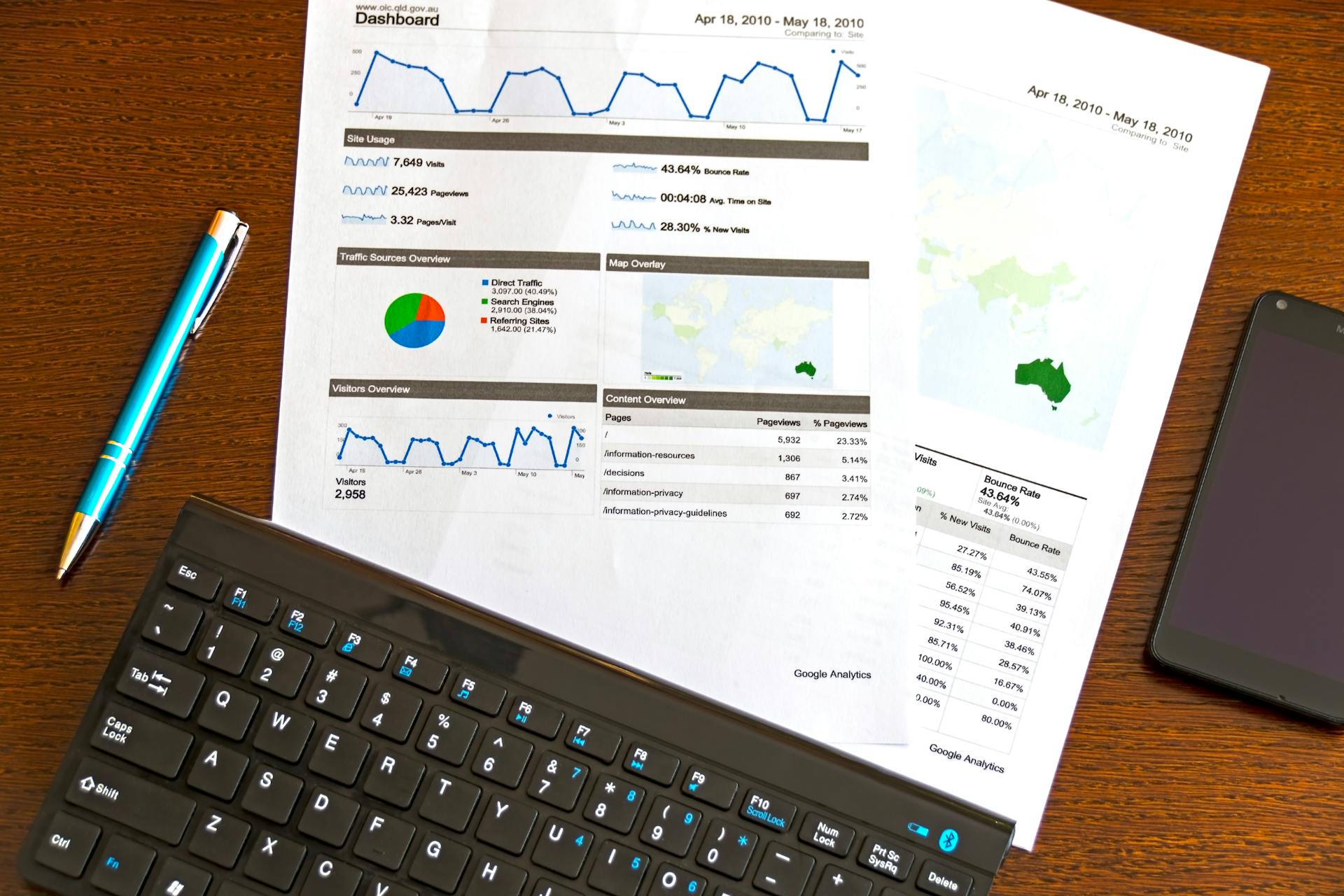In today’s data-driven world, extracting meaningful insights from the vast amounts of information generated daily has become crucial for businesses and organizations across industries. Data insights refer to the valuable knowledge and understanding gained through the analysis of raw data, enabling informed decision-making and strategic planning.
The importance of data insights cannot be overstated in our increasingly digital landscape. As businesses generate and collect more data than ever before, the ability to derive actionable intelligence from this information has become a key competitive advantage. Data insights allow organizations to:
- Identify emerging trends and opportunities
- Optimize operations and processes
- Enhance customer experiences
- Mitigate risks and predict future outcomes
- Drive innovation and product development
As we look to the future, several transformative trends are shaping how we approach data insights:
- Advancements in artificial intelligence and machine learning
- The rise of real-time and edge analytics
- Increased focus on data privacy and ethics
- Democratization of data access and analysis
- Integration of diverse data sources and types
In this article, we’ll explore these trends in depth and examine how they are revolutionizing the applications of data insights across industries. We’ll also discuss modern methods for gathering insights and provide guidance on turning data into actionable intelligence to drive business value.
Understanding Data, Analytics, and Insights
Before delving into the transformative trends, it’s important to clarify the key differences between data, analytics, and insights, as these terms are often used interchangeably but represent distinct concepts in the data processing hierarchy.
What is Data?
Data refers to the raw, unprocessed facts, figures, and observations collected from various sources. It serves as the foundation for further analysis and interpretation. Data can be:
- Quantitative: Numerical information that can be measured and expressed as quantities or values (e.g., sales figures, website traffic)
- Qualitative: Non-numerical information that describes qualities or characteristics (e.g., customer feedback, social media posts)
- Structured: Organized in a predefined format, often stored in databases or spreadsheets
- Unstructured: Lacks a predefined structure, such as text documents, images, or audio files
On its own, data lacks context and meaning. It simply represents a collection of facts or measurements awaiting analysis.
What is Analytics?
Analytics involves the systematic computational analysis of data or statistics. It represents the process of examining data sets to uncover patterns, correlations, and trends. Analytics transforms raw data into meaningful information that can be used to inform decision-making.
Key types of analytics include:
- Descriptive analytics: Summarizes what has happened in the past
- Diagnostic analytics: Examines why something happened
- Predictive analytics: Forecasts what might happen in the future
- Prescriptive analytics: Recommends actions to take based on predictions
Analytics employs various techniques and tools, such as statistical modeling, data mining, and machine learning algorithms, to extract value from data.
What are Insights?
Insights represent the deep understanding and actionable knowledge gained from analyzing data. They go beyond simply identifying patterns or trends to provide meaningful interpretations that can drive strategic decisions and actions.
Characteristics of valuable insights include:
- Relevance to specific business objectives or challenges
- Actionability, offering clear paths for implementation
- Novelty, revealing previously unknown or unexpected information
- Timeliness, providing information when it’s needed most
Insights often answer “why” something is happening and suggest potential courses of action. They require not just analytical skills but also domain expertise and business acumen to connect data patterns with operational contexts.
Key Differences
The progression from data to insights can be viewed as a value chain:
- Data is the raw material, unrefined and without interpretation.
- Analytics is the process of refining this material, employing statistical methods and computational analysis to uncover patterns and relationships.
- Insights are the polished end product, offering clear, actionable information based on the analyzed data.
While data is abundant and raw, insights are selective and refined, focusing on the implications of data patterns and how they can be applied to influence outcomes and decisions.
Emerging Trends in Data Insights
As technology continues to evolve at a rapid pace, several key trends are reshaping how organizations approach data insights:
1. Automated Insights and Natural Language Interfaces
The rise of artificial intelligence and natural language processing has led to the development of tools that can automatically generate insights from complex datasets. These systems can:
- Identify significant patterns and anomalies without human intervention
- Present findings in natural language, making them accessible to non-technical users
- Continuously monitor data streams for real-time insight generation
For example, Salesforce’s Einstein Analytics uses AI to automatically surface relevant insights from sales and customer data, presenting them in easy-to-understand narratives.
2. Synthetic Data and Privacy-Preserving Analytics
As privacy concerns mount, synthetic data is emerging as a powerful solution. This artificially generated data mimics the statistical properties of real data without containing any actual personal information. Benefits include:
- Training machine learning models without risking exposure of sensitive data
- Facilitating data sharing and collaboration across organizations
- Enabling more robust testing and development environments
Companies like Gretel.ai are pioneering synthetic data generation tools that allow organizations to create realistic, privacy-compliant datasets for analytics and AI development.
3. Confidential Computing and Secure Data Collaboration
Confidential computing technologies are enabling new forms of secure data collaboration. By encrypting data in use, not just at rest or in transit, organizations can:
- Perform analytics on sensitive data without exposing the underlying information
- Collaborate on data projects across organizational boundaries
- Comply with strict data protection regulations while still deriving insights
Intel’s Software Guard Extensions (SGX) is one example of a confidential computing technology being used to enable secure multi-party analytics in fields like healthcare and finance.
4. Real-Time Data Processing and Edge Analytics
The proliferation of IoT devices and the need for instant decision-making are driving a shift towards real-time and edge analytics. This trend involves:
- Processing data closer to its source, reducing latency and bandwidth requirements
- Enabling immediate insights and actions based on streaming data
- Integrating analytics capabilities directly into edge devices and sensors
For instance, manufacturing companies are using edge analytics to perform predictive maintenance on equipment, analyzing sensor data in real-time to detect potential failures before they occur.
5. Data Sovereignty and Personal Data Ownership
Increasing awareness of data rights and stricter regulations are leading to new models of data sovereignty and personal data ownership. This trend includes:
- The development of personal data vaults or “data wallets” that give individuals control over their information
- Emergence of data marketplaces where individuals can monetize their personal data
- Implementation of data residency requirements that restrict where data can be stored and processed
Projects like Solid, initiated by World Wide Web inventor Tim Berners-Lee, aim to create decentralized data storage systems that return control of personal data to individuals.
Applications of Data Insights Across Industries
The transformative trends in data insights are having a profound impact across various sectors:
Healthcare
In healthcare, data insights are revolutionizing patient care, drug discovery, and operational efficiency:
- Predictive diagnostics: Machine learning models analyze patient data to predict disease risk and recommend preventive measures.
- Personalized treatment plans: Insights from genetic data and treatment outcomes inform tailored therapeutic approaches.
- Resource optimization: Hospitals use data insights to optimize staffing levels, bed allocation, and supply chain management.
For example, the UK’s National Health Service uses data analytics to predict patient admissions and optimize resource allocation across its hospitals.
Finance
Financial institutions leverage data insights for risk management, fraud detection, and personalized services:
- Credit scoring: Advanced analytics models assess creditworthiness using diverse data sources.
- Algorithmic trading: Real-time data analysis informs automated trading decisions.
- Customer segmentation: Insights from transaction data enable targeted marketing and product recommendations.
JPMorgan Chase’s Contract Intelligence (COiN) platform uses machine learning to analyze complex financial agreements, reducing manual review time from 360,000 hours to mere seconds.
Retail
Retailers harness data insights to enhance customer experiences and optimize operations:
- Demand forecasting: Predictive analytics inform inventory management and supply chain decisions.
- Personalized marketing: Customer behavior insights drive targeted promotions and product recommendations.
- Price optimization: Real-time competitive data analysis informs dynamic pricing strategies.
Amazon’s recommendation engine, powered by machine learning, drives up to 35% of the company’s total sales through personalized product suggestions.
Manufacturing
In manufacturing, data insights drive efficiency, quality control, and predictive maintenance:
- Process optimization: Analytics identify bottlenecks and inefficiencies in production lines.
- Quality assurance: Machine vision and sensor data analysis detect defects in real-time.
- Predictive maintenance: IoT sensor data predicts equipment failures before they occur.
Siemens uses its MindSphere IoT platform to collect and analyze data from manufacturing equipment, enabling predictive maintenance and reducing downtime.
While these applications demonstrate the transformative potential of data insights, implementing them comes with challenges:
- Data quality and integration: Ensuring data accuracy and combining disparate data sources can be complex.
- Privacy and compliance: Adhering to regulations like GDPR while extracting valuable insights requires careful data governance.
- Skills gap: Many organizations struggle to find talent with the necessary data science and analytics skills.
- Cultural resistance: Shifting to a data-driven decision-making culture can face resistance from traditional management approaches.
Addressing these challenges is crucial for organizations seeking to fully leverage the power of data insights.
Modern Methods of Gathering Data Insights
As the field of data analytics evolves, new methods for gathering insights are emerging alongside traditional approaches:
Traditional Methods
- Surveys and Questionnaires:
- Collect structured feedback from target audiences
- Useful for gathering qualitative insights and customer preferences
- Limitations include potential bias and low response rates
- Focus Groups:
- In-depth discussions with small groups to explore attitudes and opinions
- Provide rich, qualitative insights into consumer behavior
- Can be time-consuming and may not be representative of larger populations
- Historical Data Analysis:
- Examining past data to identify trends and patterns
- Forms the basis for many predictive analytics models
- May not capture recent changes or emerging trends
Advanced Analytics and Machine Learning
- Predictive Modeling:
- Uses statistical algorithms and machine learning to forecast future outcomes
- Applications include sales forecasting, risk assessment, and customer churn prediction
- Requires high-quality historical data and ongoing model maintenance
- Natural Language Processing (NLP):
- Analyzes text data from sources like social media, customer reviews, and support tickets
- Enables sentiment analysis and topic modeling at scale
- Challenges include handling context and sarcasm accurately
- Deep Learning:
- Uses neural networks to analyze complex, unstructured data like images and video
- Enables advanced applications like facial recognition and autonomous vehicles
- Requires significant computational resources and large datasets for training
Data Visualization and Storytelling
- Interactive Dashboards:
- Present real-time data in visually appealing, easy-to-understand formats
- Allow users to explore data and uncover insights independently
- Tools like Tableau and Power BI have made advanced visualization accessible to non-technical users
- Data Storytelling:
- Combines data, visuals, and narrative to communicate insights effectively
- Helps bridge the gap between data scientists and decision-makers
- Requires skills in both analytics and communication
A/B Testing and Experimentation
- Controlled Experiments:
- Compare different versions of a product or service to determine which performs better
- Widely used in digital marketing and product development
- Requires careful design to ensure statistical validity
- Multi-armed Bandit Algorithms:
- Dynamically allocate resources to the best-performing options while continuing to explore alternatives
- Used in personalization and recommendation systems
- More efficient than traditional A/B testing for ongoing optimization
Real-Time Monitoring and Streaming Analytics
- IoT Sensor Data Analysis:
- Process data from connected devices in real-time
- Enables immediate responses to changing conditions
- Challenges include handling high data volumes and ensuring data quality
- Event Stream Processing:
- Analyze data as it’s generated, before it’s stored
- Used in fraud detection, real-time bidding, and monitoring systems
- Requires specialized tools and infrastructure to handle high-velocity data
Customer Feedback Analysis
- Voice of Customer (VoC) Programs:
- Systematically collect and analyze customer feedback from multiple channels
- Provide insights into customer satisfaction and areas for improvement
- Requires integration of diverse data sources and text analytics capabilities
- Social Media Listening:
- Monitor and analyze social media conversations about brands and products
- Offers real-time insights into public sentiment and emerging trends
- Challenges include handling large volumes of unstructured data and filtering noise
By combining these modern methods with traditional approaches, organizations can develop a comprehensive strategy for gathering data insights that drive business value.
Turning Data into Actionable Insights
Collecting data is just the first step; the real value comes from turning that data into actionable insights that drive business decisions. Here’s a guide to effectively converting data into meaningful, actionable intelligence:
1. Implementing Advanced Analytics and Machine Learning
Advanced analytics and machine learning techniques can uncover complex patterns and relationships in data that might not be apparent through traditional analysis methods.
Key steps:
- Identify specific business problems or questions to address
- Select appropriate algorithms based on the nature of the data and desired outcomes
- Train and validate models using historical data
- Continuously refine models based on new data and feedback
Example: Netflix uses machine learning algorithms to analyze viewing habits, ratings, and other user data to generate personalized content recommendations, significantly improving user engagement and retention.
2. Utilizing Data Visualization Tools
Data visualization tools transform raw data into graphical formats, making it easier to identify trends, outliers, and patterns.
Best practices:
- Choose the right type of visualization for your data (e.g., bar charts for comparisons, line graphs for trends over time)
- Use color, size, and position to highlight important information
- Keep visualizations simple and focused on key messages
- Provide context and clear labels to ensure understanding
Example: Spotify’s “Wrapped” feature uses compelling visualizations to summarize users’ listening habits over the year, driving social media engagement and user retention.
3. Conducting A/B Testing
A/B testing allows organizations to make data-driven decisions by comparing two versions of a webpage, app feature, or marketing campaign.
Process:
- Formulate a clear hypothesis
- Create two versions (A and B) with a single variable changed
- Randomly assign users to each version
- Collect and analyze data on key performance metrics
- Determine statistical significance and implement the winning version
Example: Booking.com runs thousands of A/B tests annually, optimizing everything from search result displays to email subject lines, resulting in continuous improvement of conversion rates.
4. Leveraging Real-Time Data Monitoring
Real-time data monitoring enables organizations to respond quickly to changing conditions and emerging opportunities or threats.
Implementation strategies:
- Set up dashboards with key performance indicators (KPIs)
- Establish alert systems for significant deviations or thresholds
- Use streaming analytics for continuous data processing
- Integrate with automated decision-making systems where appropriate
Example: Uber uses real-time data monitoring to implement dynamic pricing, adjusting fares based on current demand and supply conditions in specific areas.
5. Applying Customer Feedback Analysis
Analyzing customer feedback provides direct insights into user experiences, preferences, and pain points.
Techniques:
- Use natural language processing to analyze open-ended feedback
- Conduct sentiment analysis to gauge overall customer satisfaction
- Identify recurring themes and topics in customer comments
- Correlate feedback with other data sources (e.g., sales data, usage metrics)
Example: Airbnb analyzes guest and host reviews to identify common issues, improve its platform, and provide targeted support to users.
By implementing these strategies, organizations can effectively turn their data into actionable insights that drive business value. The key is to approach data analysis with clear objectives, leverage appropriate tools and techniques, and maintain a focus on generating insights that can be directly applied to improve business outcomes.
The Future of Data Insights: Unlocking Transformative Potential
As we look ahead, the future of data insights promises even greater transformative potential across industries and society as a whole. Several key developments are likely to shape this future:
- Augmented Analytics: AI-powered systems will increasingly automate the entire analytics workflow, from data preparation to insight generation and explanation. This will democratize access to advanced analytics capabilities, allowing non-technical users to derive complex insights.
- Quantum Computing: As quantum computers become more practical, they will enable the analysis of vastly larger and more complex datasets, potentially revolutionizing fields like drug discovery, financial modeling, and climate prediction.
- Edge Intelligence: With the proliferation of IoT devices, more analytical processing will occur at the edge, enabling real-time insights and actions in scenarios where low latency is critical, such as autonomous vehicles and industrial automation.
- Explainable AI: As AI systems become more complex, there will be an increased focus on making their decision-making processes transparent and explainable, particularly in regulated industries like healthcare and finance.
- Data Marketplaces: Secure, blockchain-based data marketplaces will emerge, allowing organizations to safely share and monetize their data assets, fostering innovation and creating new business models.
- Ethical AI and Data Governance: As data insights play an increasingly critical role in decision-making, there will be a growing emphasis on ensuring fairness, transparency, and accountability in AI systems and data usage.
- Cognitive Insights: Advanced AI systems will move beyond pattern recognition to generate cognitive insights, providing human-like reasoning and recommendations in complex decision-making scenarios.
- Immersive Data Experiences: Virtual and augmented reality technologies will create new ways to interact with and visualize data, enabling more intuitive exploration and collaborative analysis.
To fully leverage these emerging opportunities, organizations must:
- Invest in robust data infrastructure and governance frameworks
- Foster a data-driven culture that values continuous learning and adaptation
- Prioritize data literacy across all levels of the organization
- Stay informed about emerging technologies and their potential applications
- Engage in responsible innovation, considering the ethical implications of data usage and AI systems
By embracing these future trends and preparing their organizations accordingly, business leaders can position themselves to unlock the full transformative potential of data insights in the years to come.
Frequently Asked Questions (FAQ)
Q: What are the key benefits of leveraging data insights?
A: Key benefits include:
- Improved decision-making based on objective evidence
- Enhanced operational efficiency and cost savings
- Better understanding of customer needs and preferences
- Identification of new business opportunities and revenue streams
- Increased ability to predict and respond to market changes
- Competitive advantage through data-driven innovation
Q: How can organizations ensure the quality and reliability of their data insights?
A: To ensure quality and reliability:
- Implement robust data governance policies and processes
- Use data quality tools to clean and validate data
- Employ data lineage tracking to understand data sources and transformations
- Regularly audit and test analytical models
- Foster a culture of data literacy and critical thinking
- Implement version control and documentation for data and models
Q: What are the ethical considerations and regulations surrounding data insights?
A: Key ethical considerations include:
- Data privacy and protection of personal information
- Fairness and bias in AI and machine learning models
- Transparency in data collection and usage
- Responsible use of data insights in decision-making
Relevant regulations include GDPR in Europe, CCPA in California, and industry-specific regulations like HIPAA for healthcare. Organizations must stay informed about applicable laws and implement compliance measures.
Q: How can businesses stay ahead of the curve in the rapidly evolving data insights landscape?
A: To stay ahead:
- Invest in continuous learning and skills development for employees
- Foster partnerships with academic institutions and tech innovators
- Participate in industry conferences and forums
- Experiment with emerging technologies through pilot projects
- Develop a flexible data architecture that can adapt to new tools and methods
- Create cross-functional teams to drive data innovation across the organization
Q: What are the common challenges faced in implementing data insights strategies?
A: Common challenges include:
- Data silos and integration issues
- Lack of data literacy across the organization
- Resistance to data-driven decision-making
- Difficulty in measuring ROI of data initiatives
- Balancing data access with security and privacy concerns
- Keeping pace with rapidly evolving technologies
- Attracting and retaining skilled data professionals
Addressing these challenges requires a comprehensive approach that combines technology investments, organizational change management, and a long-term commitment to building a data-driven culture.



